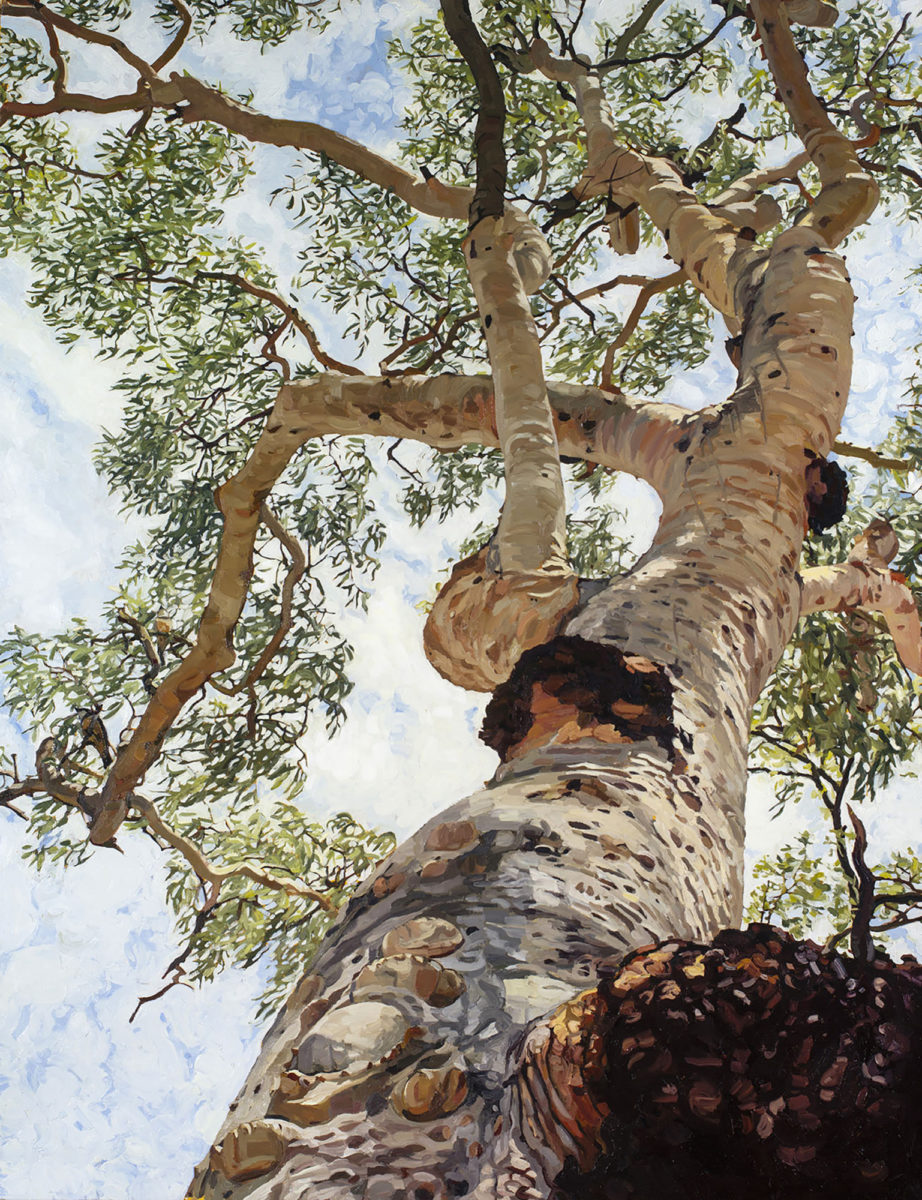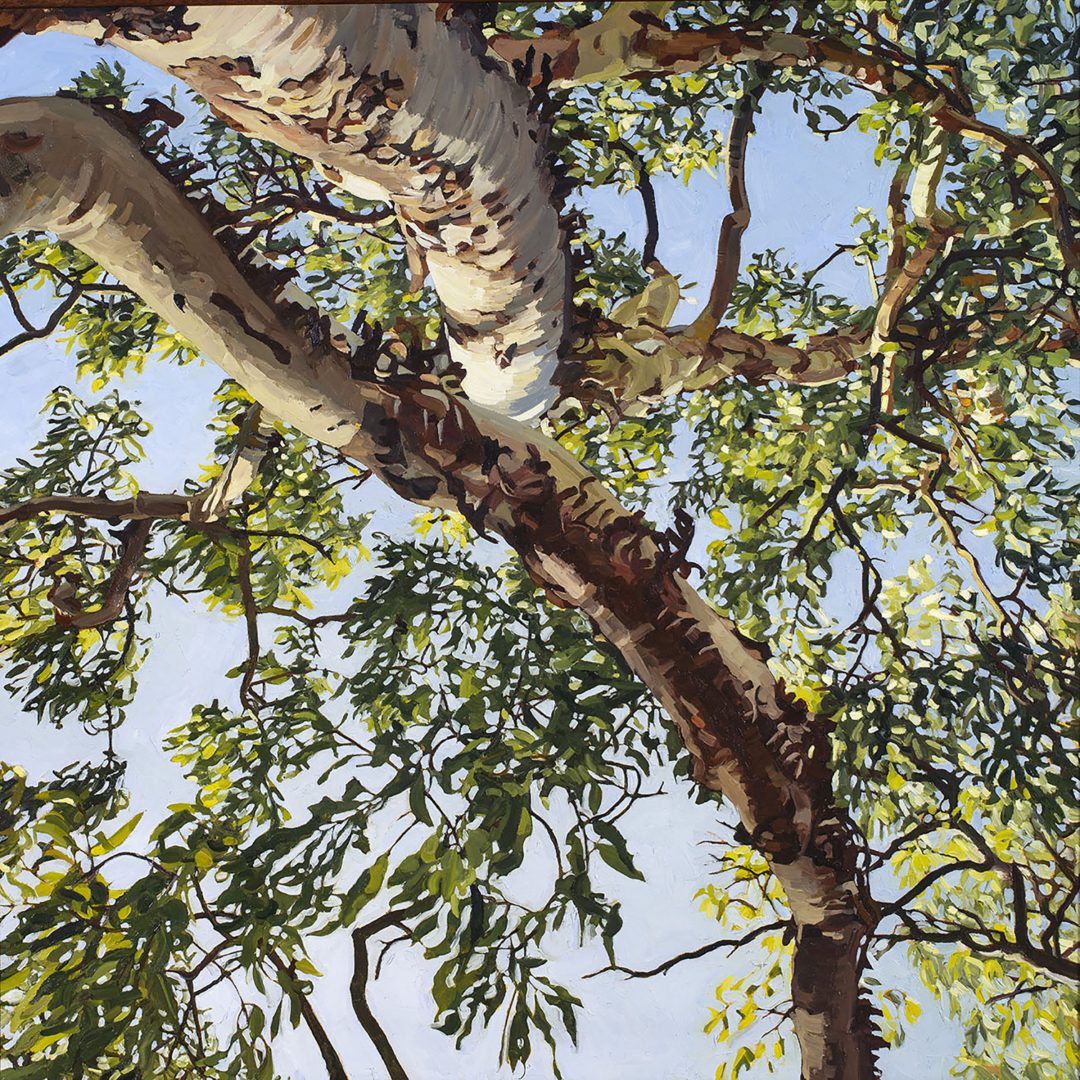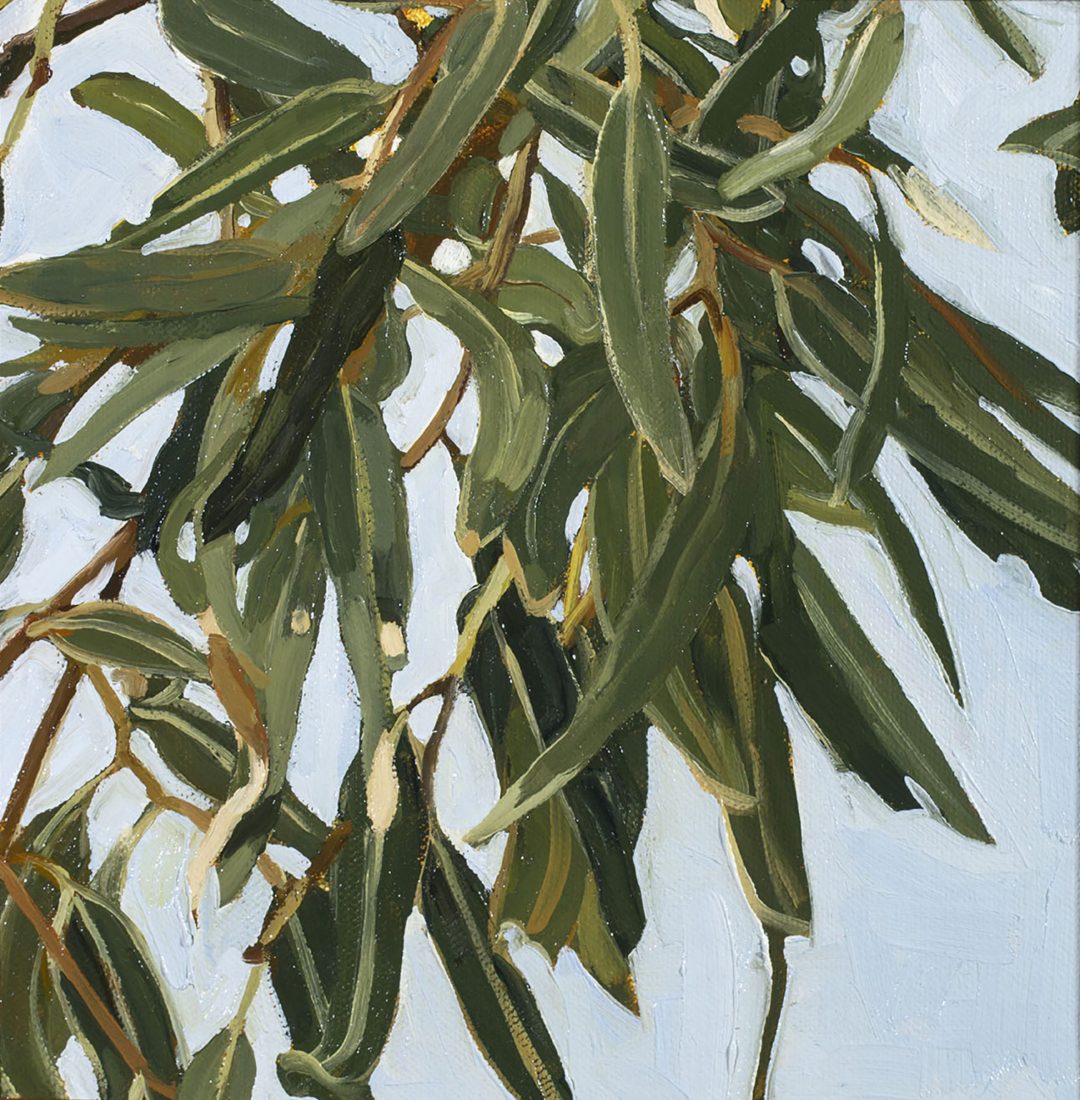BIMBLEBOX | 2018
EDWINA CORLETTE GALLERY 19 Jul – 8 Aug 2018
ARTIST STATEMENT
Bimblebox Nature Refuge is situated 1,120 km northwest of Brisbane in the heart of cattle and coal country. The fourteen-hour drive to this remnant semi-arid woodlands transforms an artist’s eye along the way. One leaves behind the city and the suburbs, the lush green gardens and rainforest, the endless malls and carparks: to Dalby, Roma, Emerald, Alpha, and finally, Bimblebox. The visuals gradually evolve into a dryer, more austere landscape, wide-open skies and towering clouds, and nature is more prudent with colour.
Judith Sinnamon traveled to Bimblebox late last year due to her lifelong concern for the environment – the fight by activists to save the refuge from Big Coal has been hard-fought since 2007, and she wanted to see the land (and its trees) for herself. But, she admits, “I was unprepared for the beauty of the place.” And even though she’d painted trees of southeast Queensland for years, this was another world entirely – and it was under siege. She goes on to say:
‘In my work, the celebration and joy of nature are juxtaposed with my (and a collective) sense of alarm in regard to the destruction of the environment. My starting point is the awe I feel when in the presence of trees – the trees of the Central Queensland region in this case.’
The balance Sinnamon pursues in her paintings parallels her desire to see equilibrium restored to humanity’s relationship with nature. At the core of her painting concerns is the interplay of opposing energies and dynamics: the stoic stasis of Corymbia Dallachiana contrasted with their vegetal, twisting gestures; her spare, earthy palette applied fluently, quickly in layered daubs, strokes and semi-swirls; and, above all, her sensitive capture of the flicker of light to shadow on the infinite forms and textures of trees, grass and sky. Taken together, these carefully crafted, visual and formal qualities document her deeply felt a connection to the natural world.
Portrait of Corymbia Aparrerinja(2018), shares an affinity with Albert Namatjira’s Ghost gum (c.1948) in that both paintings grant their trees the status of individuality. Sinnamon acknowledges the older artist’s influence on her work -particularly the iconic presence of ghost gums in his watercolours. Trees remind her of the human body: “the random twisting of limbs, the bulbous resin growths, pockmarks and scarring from lost limbs or insect activity… the luminosity of their trunks evocative of human flesh,” all combine to interconnect the arboreal with the human.
In every canvas, the artist begins with an all-over, bright ochre ground, next carefully mapping out the shapes of trunks and branches, and then building form and volume in layers of single strokes of wet-into-wet paint. Looking close-up at the surfaces of bark in Dancing Ghost Gum (Corymbia Dallachiana)(2018), one enters a microcosm of abstraction. Sinnamon capitalises on the use of subtly-toned complementary greys and taupes on areas of bark to open up space between each stroke so that a weightless luminosity exists – as if her trees are built from light. Stepping back from the painting, the structured physicality of her brushwork coalesces into volume and heft. Multi-directional movement of lanceolate leaves shimmers dark to yellow-green, forming a canopy energised by light and gravity’s pull. Rhumba-like in dancing gesture, the ghost gums’ branches gyrate, affirming nature’s erotic, dynamic play of creation and destruction.
Sinnamon’s profound fascination with trees motivates this work. “I want people to value nature,” she says. “Trees are loved because their beauty is comforting, however, nature is not a given. We can’t know that it’s going to be there forever, unchanged.”
Carol Schwarzman, July 2018















